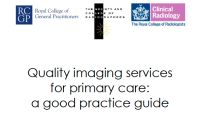With newer developments in imaging technologies, it is now becoming possible to assess not only the total amount of fat, but also its distribution in the body. A recent review article in Diabetes Technology & Therapeutics considers imaging of body fat and body composition using different techniques and the role of computed tomography (CT), magnetic resonance (MR) imaging (MRI), and proton MR spectroscopy. It also looks at functional brown adipose tissue, the role of non-alcoholic fatty liver disease (NAFLD) and its assessment, the role of imaging in bariatric surgery and the role of imaging and cardiovascular disease in diabetes.
The authors write that noninvasive imaging tests may be able to replace the need for biopsies, aid in early disease detection, and identify not only structural but also functional abnormalities in tissues such as heart muscle before a disorder becomes symptomatic. The authors suggest that apart from screenings for eyes, kidneys, heart, and feet, which are now routinely recommended, a single abdominal CT or MRI scan could be useful in people with diabetes to provide information about atherosclerotic changes, body composition, and NAFLD and for certain cancers.
Reference:
Obesity and Diabetes: Newer Concepts in Imaging. Garg K, Chang S, Scherzinger A. Diabetes Technology & Therapeutics. May 2013, 15(5): 351-361. doi:10.1089/dia.2013.0039. Published in Volume: 15 Issue 5: May 1, 2013.
Latest Articles
Imaging, diabetes
With newer developments in imaging technologies, it is now becoming possible to assess not only the total amount of fat, but also its distribution in the b...



























